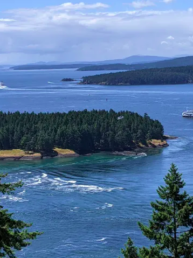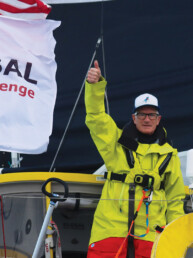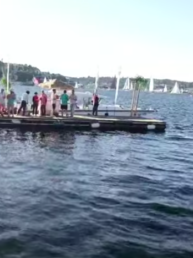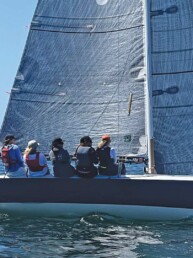In the last year, two major events in the Pacific Northwest crowned champions that sailed vessels utilizing a system of enhanced or assisted ballast—Team Angry Beaver won Race to Alaska aboard a canting-keel Schock 40; and the water-ballasted Riptide 41, Blue, topped the fleet of the biggest, fastest boats in a variety of conditions throughout the Van Isle 360. To help us better understand these systems, we are honored to have the help of world-renowned Pacific Northwest designer and the mind behind Blue, Paul Bieker.
Ultralight Displacement Boats (ULDBs) started making inroads into the sailing scene in the 1970s. This was partially driven by the new cored composite structures and improved engineering methods that allowed yacht structures to be significantly lighter than they had previously been.
The first modern ULDBs that I am aware of were designed by John Spencer in New Zealand–the classic example being Infidel (renamed Ragtime). Incidentally, she was the first ULDB that I watched glide by us as I trimmed the blooper on a death-rolling two tonner back in the late 70s. The Santa Cruz scene followed the Kiwi lead, with designers like Bill Lee creating boats that excelled in the California downwind classic races such as TransPac. These boats were exceedingly fast downwind but pretty slow upwind in most conditions. As time went on, Bill Lee, George Olsen, and Carl Schumacher produced smaller ULDBs for the wider sailing public. These boats continued the pattern of downwind strength and upwind weakness established by their predecessors (with Carl Schumacher using more powerful hull shapes to improve the situation somewhat).
Once sailors got a feel for the excitement of sailing a ULDB downwind it was a hard thing to walk away from. The answer to making a ULDB get around a windward leeward race course in reasonable form is to design the boats with a bit more hull form stability (more beam) than early ULDBs and to sail the boats with extra crew members that are only there as moveable ballast. Nowadays, most of the performance keelboats on the race course are sailed with a significant proportion of their crew acting as self-propelled units of ballast.
The Alternatives
Sailboats that want to go fast on an upwind/downwind course are between a rock and a hard place. Downwind, minimum weight is the most important factor for achieving high performance and upwind righting moment (the resistance of the boat to tipping) is the most important factor. The problem is that righting moment in a monohull keelboat comes to a large degree from ballast weight, so improving upwind performance comes with a loss downwind and vice-versa. One solution is using additional crew as moveable ballast; the other is to use some other system for increasing righting moment without increasing the downwind weight of the boat.
There are three methods that are currently being used to increase the righting moment of ultralight boats without compromising their downwind performance: water ballast, canting keels, and side foils (hydrofoils that extend off the leeward side of the boat to provide lift and righting moment).
Water Ballast
Water ballast systems are the lowest tech solution to increasing righting moment and they are what I have the most experience with (most of the boats that I have designed since 1995 have had water ballast systems). A water ballasted yacht has port and starboard tanks that can be filled as needed to provide righting moment when required for upwind sailing and reaching. The tanks are always empty for downwind sailing unless the boat is being forced up onto a tighter than normal reach. Some high performance offshore yachts also have aft centerline ballast tanks to help keep the stern down (and bow up) in heavy air downwind sailing. Water ballast systems usually require a pump (or pumps) to fill the tanks, however the other functions (transfer from one side of the boat to the other and draining) are achieved with the help of gravity alone. The extra power achieved with a water ballast system is significant, for instance our Riptide 41 design (Blue) carries 850kg (the weight of 10 people) of water ballast per side. This increases the upwind righting moment of the boat by almost 40% without giving up any downwind performance. Careful design allows us to do this while still passing all of the stability requirements for Category A offshore racing. The downside of sailing a water ballast boat is that the ballast is a bit slower to move around the boat than a typical crew. For instance, filling a tank typically takes on the order of 5 minutes and transferring water from one side of the boat takes around 20 seconds. This puts a premium on planning ahead on the racecourse and it makes tacking a bit more cumbersome and slow than on a conventional yacht. The upside is that you can sail with approximately half the crew as you would on a conventional ULDB designed for racing and you are significantly lighter downwind.
Water ballast also has significant advantages when cruising. Boats are typically cruised with much fewer people than when racing. Typical modern racer/cruisers are quite tender when shorthanded, so cruising can be a bit frustrating on windy days. In contrast, a water ballasted boat has almost as much righting moment cruising as it does racing so sailing performance is relatively unaffected. Another advantage is that a water ballasted boat is significantly lighter than a conventional boat when unballasted—so speed and efficiency under power is better.
Canting Keel
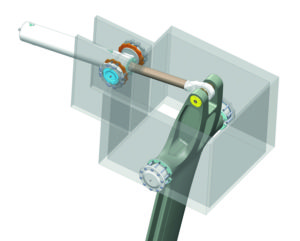
The primary alternative to water ballast for giving ULDBs the power necessary to sail well upwind and reaching is canting keel systems. The first operational canting keel yacht that I am aware of was Fiery Cross, designed and built by Jim Young after being inspired by the imaginings of L. Francis Herreshoff. The first canting keel boat I was aware of was Red Herring, designed by David Hubbard of wing sailed catamaran fame. The first production canting keel yacht was the Schock 40—designed and built in Southern California around 2000. The system has become fairly common in offshore racing boats which are focused on outright speed.
Canting keel boats rely on a keel fin that is hinged at the bottom of the boat to increase the righting moment of the boat. The keel fin extends into the hull of the boat and is attached to a device (usually a hydraulic ram) which cants it relative to the hull. The maximum cant angle is usually on the order of 45 degrees each side of centerline.
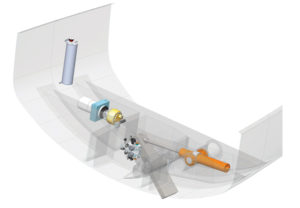 Keels on monohull boats generally serve two functions: they keep the boat from tipping over and they keep the boat from sliding sideways. The fact that a canting keel is canted significantly relative to the hull centerline means that it becomes less effective at keeping the boat from sliding sideways. For this reason, most canting keels are pared down to the minimum size necessary to carry the weight of the bulb and an additional foil (daggerboard(s) or forward rudder) is added to keep the boat from sliding sideways. This brings us to the first weakness in most canting keel installations: the keel fins are paired down to a structural minimum so that they are susceptible to cracking and intolerant of grounding. They are also dependent on fairly complicated electro/mechanical systems (except on small boats where block and tackles can be used). These factors make them a bit more suspect for cruising applications.
Keels on monohull boats generally serve two functions: they keep the boat from tipping over and they keep the boat from sliding sideways. The fact that a canting keel is canted significantly relative to the hull centerline means that it becomes less effective at keeping the boat from sliding sideways. For this reason, most canting keels are pared down to the minimum size necessary to carry the weight of the bulb and an additional foil (daggerboard(s) or forward rudder) is added to keep the boat from sliding sideways. This brings us to the first weakness in most canting keel installations: the keel fins are paired down to a structural minimum so that they are susceptible to cracking and intolerant of grounding. They are also dependent on fairly complicated electro/mechanical systems (except on small boats where block and tackles can be used). These factors make them a bit more suspect for cruising applications.
Side Foils
The final alternative for providing righting moment on ULDBs is the use of foils projecting from the side of the boat and configured to provide a combination of side force and lift. The lift reduces the effective displacement of the boat as well as providing righting moment. The current IMOCA solo offshore racing yachts have pushed this to the point where they are effectively flying on many points of sail. The problem with this sort of arrangement for most boats is that the lift is proportional to the square of the boat speed and most boats just don’t go fast enough to get the foil into a range of operating speeds where they are effective. Even in large high performance yachts they are not effective at providing righting moment upwind (i.e. their effect on righting moment does not compensate for their added drag).
_________
With the understandable challenges that come with side foils, we are typically left with two realistic options for making ULDBs perform well on reaches and upwind: water ballast and canting keels. Of the two options, canting keels hold the most potential, especially power reaching. On the other hand, water ballast offers relative simplicity and has the advantage that the boat is operating at a lighter weight downwind and in light air. This makes it a reasonable choice for light air and windward/leeward sailing, which is why I have gravitated towards that solution for the boats I have designed for the Pacific Northwest.
From the February 2020 issue of 48° North
Paul Bieker
Paul Bieker is the founder and owner of Bieker Boats, which recently relocated from Seattle to Anacortes. He has designed everything from the fastest International 14s in the world to the hulls of the most recent America’s Cup multihulls, and many things in between.

